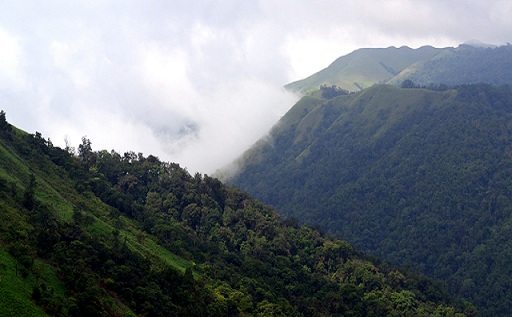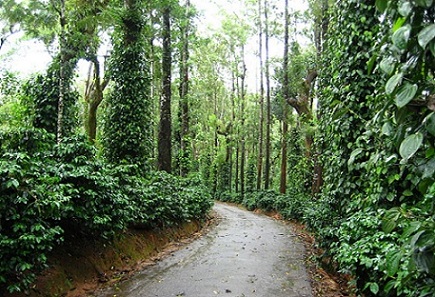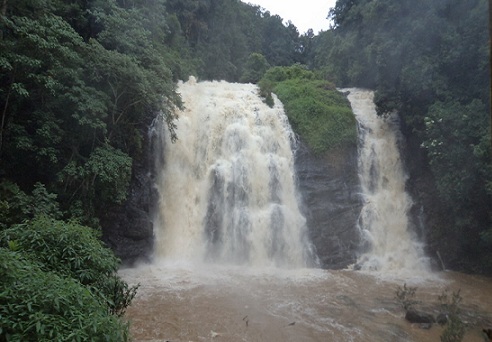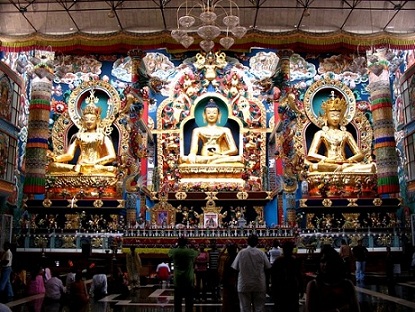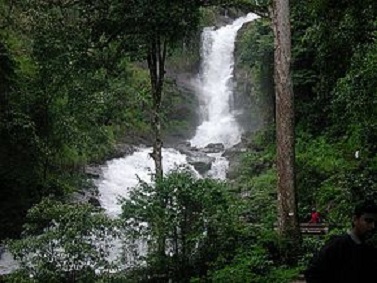 The name of Dhirubhai Ambani is like a shining star that lights up a spark in the hearts of every aspiring businessman. He is the legendary figure who has achieved his success by his intellect and perseverance. The word “impossible” never existed in his dictionary and this endeavor to reach his goal took him to the highest peak.
The name of Dhirubhai Ambani is like a shining star that lights up a spark in the hearts of every aspiring businessman. He is the legendary figure who has achieved his success by his intellect and perseverance. The word “impossible” never existed in his dictionary and this endeavor to reach his goal took him to the highest peak.
Birth and Early Life
Dhirubhai Ambani was born at Chorwad, Junagadh on the 28th of December 1932 in the state of Gujarat. His father was Hirachand Govardhandas and mother Jamunaben. Today when we see him as one of the topmost businessman in the world, we cannot imagine about his childhood days. He was not born with a silver spoon in his mouth. His father was a school teacher of a village school who had to care for his two daughters and two sons other than Dhirubhai. From his early days he was bent on doing business rather than going to school. He was very intelligent and that is well portrayed in his ways of spending his weekends by selling potato and onion fries at the fairs usually held in the village. That he cared for his family is quite evident from the fact that without using the profit for himself he gave the entire amount to his mother.
He began his working career at the age of 16 after matriculation in Aden, Yemen in a small oil company that grew up to be the distributor of Shell products. Dhiribhai was entrusted with the work of managing the company’s refilling station at the Aden Port. While working in Dubai he tied the knot to Kokilaben and became the proud father of two sons and two daughters. His innovative mind always prompted him to do something independently. He melted the Silver Rial that contained pure silver and sold it to bullion traders and thus earned a good amount.
His Life of Extensive Hard Work and Achievements
Dhirubhai returned to his homeland with his family in 1958 that marked the beginning of a new business era in India. Along with his cousin Majin he imported polyester yarn and exported spices to Yemen. The first office Reliance Commercial Corporation was established at this time on a partnership basis with his cousin and consisted f a mere 350sq.ft room at Narshinatha Street. He appointed two employees to help in the business. In 1965 Dhirubhai Ambani gave up his partnership and started his business on his own. During this time he lived in a single bedroom flat with his family in Jaihind Estate in Mumbai. He gradually set up his own empire and moved to an apartment in Altamount Road in South Mumbai. During the 1970s his business was worth 10 lakhs. The Reliance Industries took a great stride forward and was one of the well known companies in the world having various sectors like textiles, petrochemicals etc.
In 1977 he set up his unique textile mill in Ahmedabad at Naroda. Polyester fibre was greatly used in the manufacturing of the materials that we get till today. He named this brand as “Vimal” after his elder brother. Reliance Textiles was assessed by the World Bank technical team and achieved the “excellent” rating.
Dhirubhai had a wonderful ability to convince investors and his success stories were so visible that he did not have to vouch for his deals. He first started the Equity Cult in this developing country of India. General meetings were held annually in the stadium where all the shareholders and investors met to discuss about the growth and prospects of the companies. In 1992, Reliance was featured in Forbes 500 list and was the first Indian company to reach this level. He was marked out as the greatest creator of wealth of the 20th century. However a severe heart attack laid him down and he handed over the responsibilities of Reliance Companies to his able sons Anil Ambani and Mukesh Ambani. From a mere worker he rose to be one of the fortunate 60 billion dollar families in the world. This magnificent business tycoon is the second richest family and is among the top 50 businessman in Asia. He left for his heavenly abode on the 6th of July 2002.
Dhirubhai Ambani’s Amazing Strategies
The numerous businessmen that we hear of today who have achieved great success in life owe their achievements to the ideals and methods followed by Dhirubhai Ambani. His policy of allowing freedom to assistants got the best in every field. The “no supervision and no policing” system brought out the best. When there is peace of mind and the freedom to express one’s ideas there is sure to be optimum output and this fact was well implemented by Dhirubhai Ambani that brought him success in life. He was a man of head and heart and always open to new changes and ideas. He believed and trusted in the potentialities of his team members and his congenial disposition won the hearts of all.
Sakleshpur takes its name from the temple built on the banks of the Kumaradhara river to honor Shiva. Sakleshpur is located in the Shiradi range of Western Ghats. This area is popularly known as the Malnad (which literally means hilly region) area of Karnataka. The whole of Malnad is an enchanting place filled with thick and lush greenery, tropical forests, acres and acres coffee estates, a few Tea estates as well, small streams and rivers, innumerable waterfalls and a view of the amazing Western Ghats. In fact it is a magical place,a real paradise on earth.
Sakleshpur is a small town that is located at a distance of 38 kms from Haasan which is the closest major city to this town. And Hassan itself is located at a distance of 180 kms from Bangalore, the capital city of Karnataka and 175 kms from Mangalore the major port and coastal city of the state. It is located at about 4250 feet above sea level and has pleasant weather all round the year and it rains all through the year. The drizzles and the intermittent rains feed those tropical forests that cover the entire area of the western ghats. The place is known for its wide range of flora and fauna and one gets to see different kinds of wild life here.
I have had the opportunity of visiting Sakleshpur many times since my student days .In fact the state highway that connects Mangalore to Bangalore passes through the western Ghats and the town of Sakleshpur.
The place has grown over the years but still managed to remain unique with an identity of its own. Basically it is a small town that is spread over the little hills and the valleys on top of the mountains and with a magnificent view of the mountain range from every part of the town. One can hope to have a relatively quiet holiday there since most of the resorts are situated outside the town. The town is crowded and busy mainly because of the highway and the activity involved in catering to the needs of the travelers who normally stop here for a break.
You get to see the valley in all its glory when you drive out of Sakleshpur and the smaller hills from where you look on to the Western Ghats that has everything that you wish for. You simply want to gaze at those hills and the clouds constantly playing hide and seek and the ever changing scenery that nature is displaying for your benefit. One loses count of time and days here. You don’t want to be disturbed by your mobile,TV the internet. I would say that it is a very romantic place, an ideal spot for couple to get lost in !
What to see and do
Recently we went there on a package tour offered by one of the many resorts that was situated in the valley surrounded by the shiradi ghats and a smallish tributary of river Kumaradhara passing through it. The resort had a beautiful view of the ghats and the valley which is in between the resort and the Western ghats. After driving down from Haasan where we had spent a day visiting Halebid and Belur ,when we arrived at the resort it was dark and we could hear the roar of a waterfall which was close to the resort. The next morning we got to see it at close quarters.The blue of the sky, lush greenery of the forest and the coffee plants covering the sloping hill sides and those amazing mountains showing from amidst the white clouds. I was reminded of Chickmaglur which was very similar to this place also situated on the other side of the Western Ghats in the Sahyadri range!
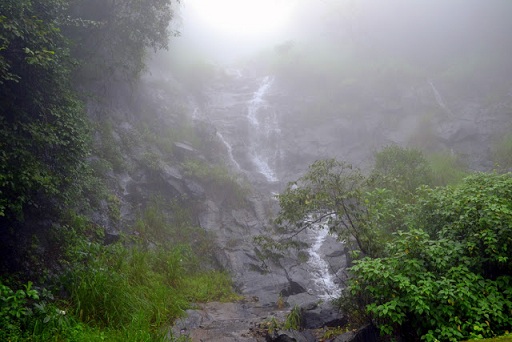
There are many spots one can visit from here like Bisleghats another smaller hill station which is at a distance of 10 kilometres and you can take two different routes to get there and both are special in their own way since the drive through the narrow ghat roads and quaint little villages is very scenic and except for some bad patches the road is good though winding ! I drive that way from Bangalore regularly and although I know every inch of the road by now, am still amazed and pleasantly surprised each time I pass that way since the landscape is ever changing and beautiful. The place looks at its best during the rainy season when the waterfalls (there are many located by the road side and down below in the valley) are full, sometimes even overflowing to the winding roads.
Sakleshpur has large expanses of open spaces, a dam now built across A stream that later joins river Kumaradhra at a place called Kemphole and the most maginificent view of the mountains. There is a huge national park which has many rare species of orchids ,plants and trees.The entire place can be covered in a day and if you are coming from Mangalore you can make a stop over here and then proceed to Haasan or other places of interest.
Some Useful information about the place
The only draw back is that there are some naxalites hiding in the place , in fact they are there everywhere in Chikmaglur, Kudremukh and all over the western ghats and we were constantly warned about them by the resort owners and the other locals that we met. Even this little piece of dreaded information did not stop us from having our fun and enjoying the place to its maximum..However, we were shocked to hear that a few villagers were beaten that night and robbed of some essential commodities like rice,dhal and a couple of chicken and a cow – goes to show that they were on the verge of starvation and poverty. In some ways it was pitiful to a certain extent, also an eye opener. I felt that it was a movement that had no future since it was not a mass movement nor was it people friendly even after all these years - More like a misguided missile and a wasted effort and man power ! But, it is better to know that they have made this part of the state their hideout and although many of them get caught from time to time, we still hear about their nefarious activities. In fact within a couple of days 2 of them were shot dead by the forest guards and both of them were barely out of their teens which was shocking!
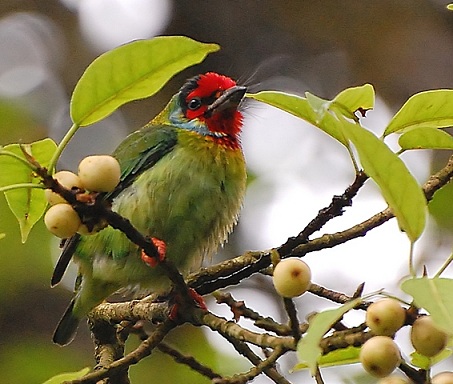
Coming back to the topic, one can visit Subramanya, where there is a beautiful temple and a river surrounding the temple and visited by many tourists all round the year and Dharmastala, another ancient temple that is very famous. The drive to both these places is beautiful. One can stay at the guest house at both these temple resorts for which you need to book in advance since it is filled to capacity most of the time. The booking can be done on line and the place is definitely worth visiting. There are many homestay as well in all the places and most of them offer meals as part of the package as well since it is difficult to find decent restaurants on the outskirts of the city.
When you are planning for a holiday in these areas you need to take at least one jacket or sweater to keep you warm since nights are cold and an umbrella or a rain coat just so that you are prepared for those unexpected showers that is part and parcel of every day life there. We got caught in one while we were trekking and it was quite a scary experience since mist came on fast and we could see nothing for about half an hour. We just sat down where we were shivering and wondering how to get help, and as suddenly as it came the rain stopped and the mist began to clear away too...this is something that has been experienced by many tourists.
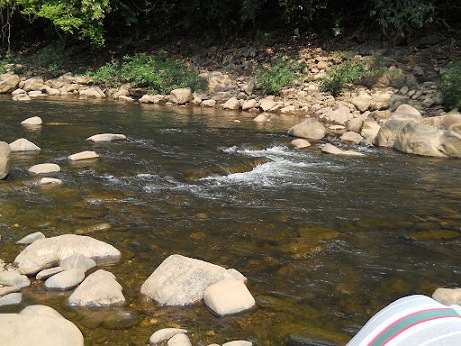
Finally to conclude, Sakleshpur is not an expensive place and other than river rafting and trekking you do not have any other outdoor sport faclities, although I read somewhere that the state tourism is planning ito introduce it in a big way in the coming months . When you are visiting Bangalore or Mangalore, you can easily stop over here for a weekend at least if not longer since it's very well connected by road. The place , as I already mentioned several times is amazingly beautiful and most tourists tend to come back here, some even coming here at different time of the year to get a complete feel of the place.
The Portuguese explorer who first reached India via the sea was one of the most renowned and celebrated explorer in the world. Prior to his iconic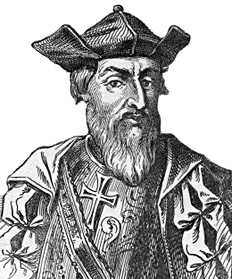 discovery of the sea route to India many sailors had tried reaching our country land sailing through the waters but failed to do so and many of them suffered unfortunate losses of money and even lives. His discovery of the new route to India laid the foundations of the colonial empire in Asia. It became easy for the Europeans to reach us through the sea where earlier to the discovery they had to take a risky route that required crossing the dangerous Arabia dessert and much disputed Mediterranean.
discovery of the sea route to India many sailors had tried reaching our country land sailing through the waters but failed to do so and many of them suffered unfortunate losses of money and even lives. His discovery of the new route to India laid the foundations of the colonial empire in Asia. It became easy for the Europeans to reach us through the sea where earlier to the discovery they had to take a risky route that required crossing the dangerous Arabia dessert and much disputed Mediterranean.
Vasco da Gama put his first step on the Indian soil in Calicut after a smooth sea voyage on the 20th May 1498. Vasco da gama was born in around 1460 in Sines in Portugal. His exact date of birth is not known. He was born to Estyo da Gama who worked as the civil governor of Sines in the 1460s southwest coast of Portugal. His mother was of English origin namely Isabel Sodré. The couple had five sons and a daughter too; Vasco da gama was the third one of them. He is said to have learnt navigation from the inland town of Évora and later joined the Navy.
During the 1480s Vasco da Gama joined the Order of Santiago at the time of King John II of Portugal. It was in 1942 that Vasco da Gama was ordered by the king on a mission to seize French ships from Lisbon and Algarvae regions. The task was performed efficiently by him.
The early expeditions from Portugal were organized by Prince Henry the Navigator to the African coastline in search of gold and other riches during the early 15th century. After King Henry’s death the African enterprise was sold off to Fernão Gomes who lead and expanded the neglected business merchandising in gold, spices like pepper, ivory and slaves. It was in 1474 that Prince John asked his father the then ruler to give the African charter to him. Finally when in 1481 he became the king John II of Portugal the trade witnessed new heights. In a bid to expand the trade business he was keen to enter the Asian spice market that was very profitable. King John II ordered his captains to search for a sea route to Asia so that he could take forward his aspirations of the Spice trade between Europe and Asia. As a part of the mission the king is believed to have sent two spies called Pero da Covilha and Afonso de Paiva to India to get information in the spice market flourishing in India. The two spies covered the route to India via Egypt and East Africa. One of the major steps in the exploration of the sea route to India came in 1487 when the king’s captain Bartolomeu Dias circled the Cape of Good Hope and with him brought the exploration of the Fish River in South Africa. He gave the king important information and observations that the Indian Ocean was connected to the Atlantic and a sea route can possibly be discovered. The task to work on these findings by the king’s team was given to Vasco da Gama by King Manuel I, the successor of King John II.
The first voyage- The exploration
Vasco da Gama set for the first voyage to find a direct sea route to India from Europe on July 8, 1497. With a fleet of four ships and a crew of 170 men he started from Lisbon. The ship he commanded was the St. Gabriel was about 178 tons and 27 meter in length. He passed the great Fish River on December 16th. He sailed for several months before rounding the Cape of Good Hope and then set towards the unexplored Indian Ocean. They crossed Mombasa now in Kenya and Malindi port in Feb 1498 among others. The fleet of the four ships lead by Vasco da Gama arrived in Kappadu near Calicut on May 20 1498. He left Calicut on 29 August 1498 taking along with him a few Nairs and sixteen fishermen forcefully. Troubled by the monsoon wind patterns the fleet of ships commanded by Vasco da Gama reached back Malindi on January 7, 1499 in not a very good shape. Many of the crew members had fallen sick; many had scurvy disease and more than half lost their lives. They crossed the Cape of Good Hope by March 20 and arrived back at the African coast by April 25. With the loss of one ship, failure to make a commercial treaty with Calicut and loss of lives of more than half the crew the mission was looked upon as a failed attempt but it nevertheless gained high profits by selling the spices that Vasco da Gama brought in two ships. He was awarded by the King for his exploration of the sea route that was highly profitable to Europe.
The second Voyage
The second voyage to secure the trade treaty with India was lead by Pedro Iyares Cabral. While Vasco da Gama’s first trip took around two years to complete the second trip was made in just six months. Cabral was able to establish the first Portuguese trading post in India. In 1502 Vasco de Gama again visited India with a fleet of 20 ships along with his nephew and uncle to secure the trade ties further. On reaching Calicut the crew killed 38 hostages and ruined the trade post located there. He then along with the crew moved to Cochin and set up an alliance with the then ruler of the city. On February 20, 1503 Vasco da Gama started his journey back to his home country. After a journey of around seven months he reached Portugal on October 11, 1503.
His third and last voyage
He lived a life of ignorance till some years. King Manuel I in 1519 gave Vasco de Gama a feudal title. King Manuel I died in 1521 and was succeeded by King John III who appointed Vasco da Gama as his advisor. It was in April 1524 with a fleet of fourteen ships Vasco da Gama came to India for the third and the last time. His visit to India was mainly triggered due to the growing corrupt Portuguese officers in the country. In the same year he was declared the Portuguese viceroy in India by King John III. But soon after a couple of months he suffered from malaria and eventually died on 25th December 1524 on the eve of Christmas.
Personal life
Not much is known about the great explorers of history. Neither much about his childhood nor about his early life is known. Vasco de Gama married a lady named Catarina de Ataide in 1501. She belonged to an effluent family. After the end of the second voyage he retired peacefully into his family life along with his six sons and wife. Soon after he visited India for the third time he died after a period of three months in the city of Cochin in the December of 1524. Some speculate the reason for his death to be overworking. His body was sent back to his home country for the burial. The largest city in the city of Goa was named after the great explorer and is also called as Vasco. He will always be remembered as one of the greatest explorers history ever produced.
About Coorg
Kodagu or Coorg as it is popularly called is also known as the Scotland of the South. Coorg is situated in the Western Ghats amidst an abundance of natural lush greenery and is an ideal place for a holiday. It is surrounded on the one side by the two National parks namely Nagara hole and Bandipur and the Wyanad Bamboo forest on the other side and the Western Ghats covering the entire district. So one is constantly climbing up one hill and climbing down the other
Coorg is an ideal place for a weekend getaway .There are many places of interest in Coorg and the weather remains cool and pleasant even during summer months and the temperature dips down to single digits at the height of winter.Many tourists come here just to enjoy the monsoon rains which is very heavy and can cause many disruptions since the ghat roads tend to have land slides and the traffic comes to a complete halt when that happens. Madikeri or Mercara is the capital of this district and also the major town here.Most of the tourist places are centered around here and easy to access.

I have visited madikeri and other places in Coorg like Somavarpet, Kushal nagar and Kutta which are all beautiful in their own right. Nature is at its best here and the place is very scenic. Coorg is famous for its Coffee estates and most Kodava families own coffee estates small,medium sized or large..What remain in your mind is the greenery and the abundance of it , the wild flowers and the extremely good looking Kodavas ..
The Kodavas are the majority race in Kodagu, however there are many other groups that have migrated here and live in harmony with the kodavas. The second largest community of Coorg are the Gowdas who are basically agriculturalists most of whom tend to live close to the borders of Mangalore district and Mysore district and are a very prosperous farming community.
History and population
According to the Puranas, the land was called Krodadesa which later became Kodagu. The name has to do with river cauvery which is the life blood of Karnataka and especially Coorg from where it takes its birth with the reference being given to Mother Cauvery ,the fountain of life and sustenance in this land. Talacauvery which is in at Brahmagiri range of Western Ghats is the source of the Cauvery which happens on a specific day in October. Kaveri manifests herself as a sudden upsurge of water in a small tank although there are many controversies surrounding it. However, belief is greater and a large number of devotees gather to witness this phenomenon and offer a special prayer.
Coorg in olden days had everything in plentiful -rainfall , fruit orchards and rice fields, which made it the granary of the region and it was but natural that invaders had kept on eye on the place But, for centuries, the Kodavas who are a hardy mountain race had successfully fought off the invaders including the Mughals and the British who instead played it safe by offering friendship to the Raja. The place has always been known for its peace and prosperity. The British brought in coffee cultivation on a large scale. They also left behind a legacy of a colonial lifestyle that is still being followed. One can find many Kodavas serving in the armed forces.
In 1956 when the greater Karnataka state was formed Coorg it was merged with the State of Karnataka.
Places of interest in Kodagu
Madikeri ( Mercara) - This is the major town in Kodagu and also the entrance point when you come from Mangalore side.The town is situated at a height of 1300 meters. One can visit places like Raja seat which is a park which overlooks the valley and has very beautiful plants and trees. The other major attractions include Omkareshwar temple which is situated right in the center of the town. One can also visit the Madikeri Fort which was built in the 17th century. Another very interesting and scenic spot is Gaddige which is actually a monument built for the tombs of the Kodava royalty of ancient times.
Abbey Falls - This very beautiful waterfall is situated at a distance of about 10-12 kms from Madikeri. After driving down to the place, you have to walk 2 kms through the coffee and teak wood plantations to get to the place . Abbey falls at their fullest best soon after monsoons.It is impossible to get there during monsoons since the fall overflows and can be dangerous.I have seen this scary spectacle once when the the river was in spate and the waterfall was overflowing from every side .
Talacauvery - More than the religious and other implications this is one place that takes your breath away. You are lucky if you get a clear view when you get to the top of Brahmagiri where tala kaveri the birth place of river Cauvery is situated. Most days the entire place is misty .The best time to visit is after monsoons when the river is relatively full and the sky is clear.
Bhagamandala - As you drive down from Tal cauvery you come to Bhagamandala , where the two rivers Vauvery and Kannika unite and continue their journey . The place i s alos known as Kudala sangama which means a place of unity. There is a temple here and during monsoons when the rivers are full the road gets cut off since there is heavy flooding . Bhagamandala is located at a distance of about 4 kilometers from Madikeri.
Bylakuppe - Bylakuppe is a small village now famous for its Buddhist monastery and tibetan settlement .This is a settlement that was made specially for the Tibetans who came to India when China took possession and imposed its dictatorial rules.This place now looks like a mini Tibet where you get to see tibetans everywhere on thie two wheelers and ever smiling leading their life in harmony and peace contributing in their own eay to the state. The womne run small shops seling their handicrafts and other art objects which they are good at .
The monastery is extremely beautiful with a Golden Statues of Buddha located within the temple premises and some mind blowing Buddhist paintings that are displayed within the temple walls . The monasatry and the very friendly monks add to the serenity of the place. One can buy trinkets and hand made decorative items that are on display ouside by the roadside. There are quite a few road side eating places where you get tasty momos and hot sumptuous soups. These are very popular with Indians who are traveling to cities like Kushalnagar ,Madikeri and Mysore and they take a break here to taste the delicacies prepared by the tibetans.
Kutta - If you are looking for a home stay amidst the coffee plantations that overlooks a beautiful waterfall then Kutta is the place for you.It is close to Wayanad bordering on to the neighboring Kerala state and an amazing place where you can go trekking and enjoy natute .In fact Kutta is very close to the Nagara hole forest range where they have elephant camps and tiger preservation programs and at night you hear the trumpet of elephants and the growl of tigers. Iruppu water fall is situated here and is a very scenic spot that can be only reached walking through paddy fields and thick woods. One has to be very careful of leeches which are plentyful here and when we go there in spite of taking every precaution possible , invariably we get bitten by leeches...more so if you happen to visit the place during monsoons.
A few interesting facts
Legend has it that Cauvery was the wife of sage Agasthya. She transformed herself into a river to serve the people and such was her power that she had to completely submerge herself into the ground otherwise there was a fear that the entire mountain range would get flooded by her force. But when the sages prayed and pleaded with her to come out and bless the land she rose up again as a forceful river. And at this site a small shrine was built signifying the birth of the river which is known as Tala kaveri.
When Sage Agasthya wanted to stop his wife from becoming a river and pulled her saree, the pleats of her sari were pushed backwards when she resisted and to this day Kodava women wear their sari with the pleats worn at the back...
According to the local stories during the conquest of Alexander the Great, many of his Greek soldiers, migrated down south and loved Kodagu and its natural beauty and married the natives and settled down in the hilly areas of the Western Ghats. So the present generation of Kodavas are descendants of Greeks and it is evident in their fair complexions, aquiline features and carriage.
Coorg can be reached only through road. It can be reached from Bangalore ( 260 kms or more ) as well as Mangalore ( 130 kms) and from Mysore (110 kms). The Bangalore Mysore highway is excellent for driving and once you reach Mysore you take the diversion to Hunsoor from where you can reach Kodagu. The road is very good and the drive is also very scenic once you reach Coorg.
When you take the Mnagalore route , you have to take The Bangalore Highway and take a diversion at Sulya which takes you to Madikeri. The drive is beautiful since you will be driving through Paddy fields and arecanut plams in sulya and Sampaje ghats which is part of Western Ghats .
Kodagu is a place definitely worth visting and one can easily take an extra day or two to have a quick trip since the district is small and can be covered within two or three days.
Are you on a vacation to Scotland? If yes, then million of things and activities are waiting for you. Here, in this article, I'll be talking about the famous Malt Whiskey Trail tour in Scotland.
As we all know, Scotland is famous for its number of distillaries and malt whiskey; a theme tour has been built around the city to take the visitors through various distillaries of the Scotland's most well known whiskey region, Speyside. More than half of the Malt whiskey distillaries of Scotland are located in Speyside which makes it a paradise of whiskey lovers. The most famous malt whiskey of this region is the ‘Malt Whisky Country'.
If you are a whisky lover, then the malt whisky trail tour is a must for you to get an insight into how the barley, water and yeast are used by various distilleries to give a unique and distinct taste to the whisky. The Malt Whisky Trail Tour takes the visitors to the famous distillaries of Speyside. Let us begin our tour of few of the famous malt distilleries in the Speyside region.
Glenlivet Distillery
The Glenlivet Distillery was opened in the year 1824. The famous single malt whisky "Glenlivet" is a production of this distillery. Admission to this distillery is free and visitors can take a guided tour inside the distillery. Tour includes a visit to the Josie's well which is the water source for the production of whisky, tutored tasting of 7 different expressions of the Glenlevit, and a brief description of how the climate and terrain form a key factor to the production of a unique malt whisky. Also, visitors can see the ongoing exhibitions inside the distillery and buy whisky themed gifts as souvenirs from the gift shop.
Cardhu Distillery
After visiting the Glenlevit distillery, visitors proceed towards the Cardhu Distillery. Cardhu distillery is the only distillery which has been pioneered by a woman. Visitors can here taste the superb 12 years old single malt cardhu whisky. Visitors can also take a guided tour to know about the whisky making process in the distillery. There is also a separate guided tour which also includes tasting of 3 of the single malt whiskys of this distillery.
Benromach Distillery
Benromach Distillery produces the world's first fully certified organic single malt whisky. Vistors can take an insight into Benromach Distillery and the history of its owners. Also, one can experience the tutored tasting of four of the single malt whiskies of Benromach range here. One can also visit the Benromach museum inside the distillery. It is better to book your tour in advance.
Glenfiddich Distillery
'Glenfiddich' is the excellent single malt whisky produced by this distillery. Vistors can take a 90 minutes long guided tour and can taste the 12, 15 and 18 years old Glenfiddich single malt scotch whisky.
More Articles …
Subcategories
Festivals
The category focusses on festivals followed at different places of the world.
Page 7 of 391
